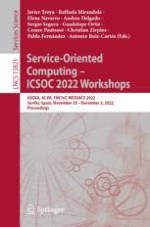2023 | Book
Service-Oriented Computing – ICSOC 2022 Workshops
ASOCA, AI-PA, FMCIoT, WESOACS 2022, Sevilla, Spain, November 29 – December 2, 2022 Proceedings
Editors: Javier Troya, Raffaela Mirandola, Elena Navarro, Andrea Delgado, Sergio Segura, Guadalupe Ortiz, Cesare Pautasso, Christian Zirpins, Pablo Fernández, Antonio Ruiz-Cortés
Publisher: Springer Nature Switzerland
Book Series : Lecture Notes in Computer Science
